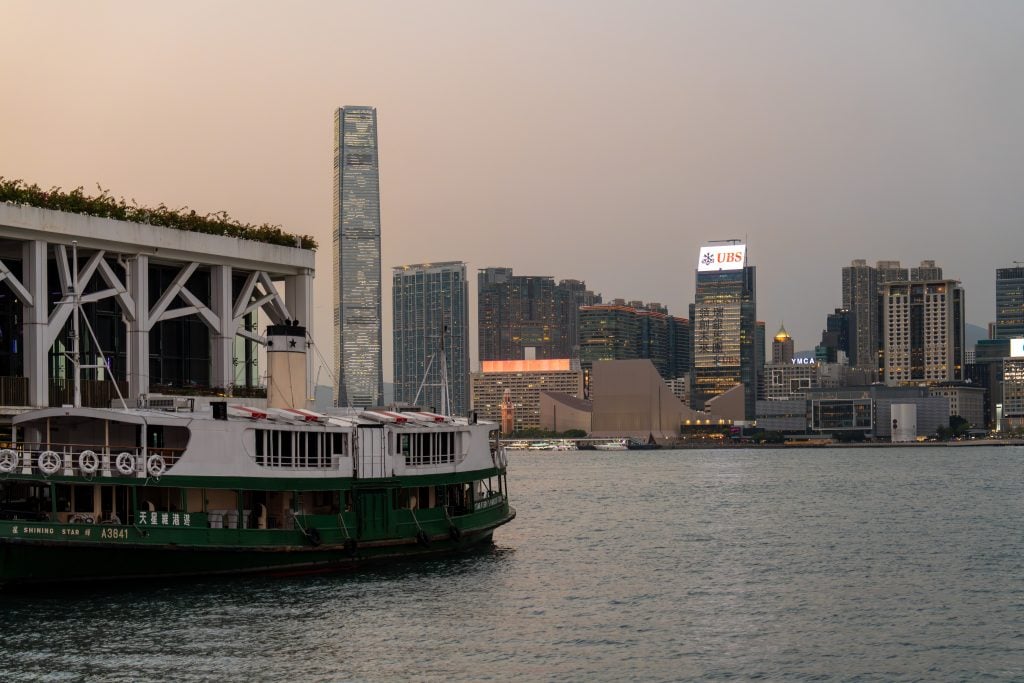The View From is excerpted from The Asia Pivot, Artnet Pro’s biweekly members-only newsletter providing mission-critical analysis, insights, and exclusive intelligence on developments in Asia’s art markets, with a focus on business opportunities and challenges. Subscribe here to receive it directly to your inbox.
Against a backdrop of slower economic growth, a continuing property market slump, and other economic uncertainties, the Chinese art market was already starting to slow by the end of 2023. Sales decreased again in 2024, according to the latest Art Basel and UBS Art Market Report, with a sharp drop of 31 percent year-on-year to $8.4 billion, its lowest level since 2009.
There were some bright spots across Asia Pacific in what was otherwise a slower year for the global art market. Japan bucked the trend with a 2 percent increase in sales, and Australia’s dealer market continued its strong performance, growing 11 percent for the second year in a row. Even in China, there are signs of resilience—it remains the second-largest auction market in the postwar and contemporary sector, and dealer sentiment is improving, with half of those surveyed expecting stronger sales in 2025.
There’s also the broader backdrop of tariff tensions, particularly between the U.S. and its trading partners, including China. While art isn’t always the main focus of these policies, it doesn’t exist in a vacuum. That said, this isn’t a global trade war, but rather a U.S. trade war. And there’s a case to be made that it’s strengthening regional ties within Asia. Intra-Asian collecting remains strong, and many of the region’s major markets—like China and Japan—continue to be fueled by local and regional demand, according to the Art Basel-UBS report.

UBS is the Global Lead Partner of Art Basel.
Asia is incredibly diverse, so the impact of macroeconomic trends such as inflation or interest rate policies really depends on the market. In general, we didn’t see the same inflation pressures here as in the West, but a challenging real estate market and tighter liquidity still made collectors a bit more selective across the region. That doesn’t mean less interest in art, but we’ve seen more thoughtful decision-making, especially at the high end: less impulse buying and more emphasis on background research.
UBS holds one of the world’s most important corporate art collections, with over 40,000 works by artists worldwide. For us, contemporary art isn’t just something we support. It reflects the values we share as a firm: global thinking, innovation, and a willingness to challenge the status quo. That’s why we continue to invest in cultural platforms that bring people and ideas together. I believe that’s what we urgently need, especially in today’s climate.
The energy on the ground at this year’s Art Basel Hong Kong was incredible, and I’ve seen growing interest in the Southeast Asian art scene from collectors across the region and beyond. There’s strong engagement with new platforms and artists, especially among younger collectors, and a desire to connect collecting with their own communities and cultural expression.
One thing that stands out in Asia is how personally driven collecting tends to be. Compared to Western markets, collectors in Asia tend to be less motivated by financial returns and more by passion and meaning. In the report, only 16 percent of collectors surveyed in Japan, 19 percent in Indonesia, and 20 percent in Hong Kong said financial factors were their main reason for buying art, lower than the 24 percent across all markets. This makes sense in a region where collecting is often closely tied to family values and culture.
We saw in last year’s report that 91 percent of HNWIs had works in their collections that were inherited or gifted through a will or other bequest. Many collectors want their families to understand why certain works were acquired, not just what they’re worth. We’re also seeing more collectors involve the next generation early, making the transition more personal and purposeful.
There is a unique opportunity to support cultural capital and cross-generational art engagement in Asia, particularly as wealth continues to grow and shift across generations. According to UBS’s Global Wealth Report 2024, roughly $83.5 trillion is expected to be passed on globally within the next 20 to 25 years. Of this amount, an estimated USD $9 trillion will shift intra-generationally or horizontally between spouses. We also expect the number of millionaires to continue to grow over the next five years, advancing by an estimated 15 percent to 2028. Some of the highest growth is expected in key regions in Asia (outside Mainland China), including Taiwan, Japan, South Korea, and Indonesia.
Younger generations are increasingly drawn to art that reflects identity, social impact, and cultural relevance, showing strong interest in emerging, digital, and underrepresented artists. As this curious and values-driven group matures, they are poised to shape a more daring and diverse future for collecting.
—As told to Cathy Fan
Adrian Zuercher is co-head of global asset allocation and co-head of global investment management for Asia Pacific at the UBS Chief Investment Office.
This post was originally published on this site be sure to check out more of their content





